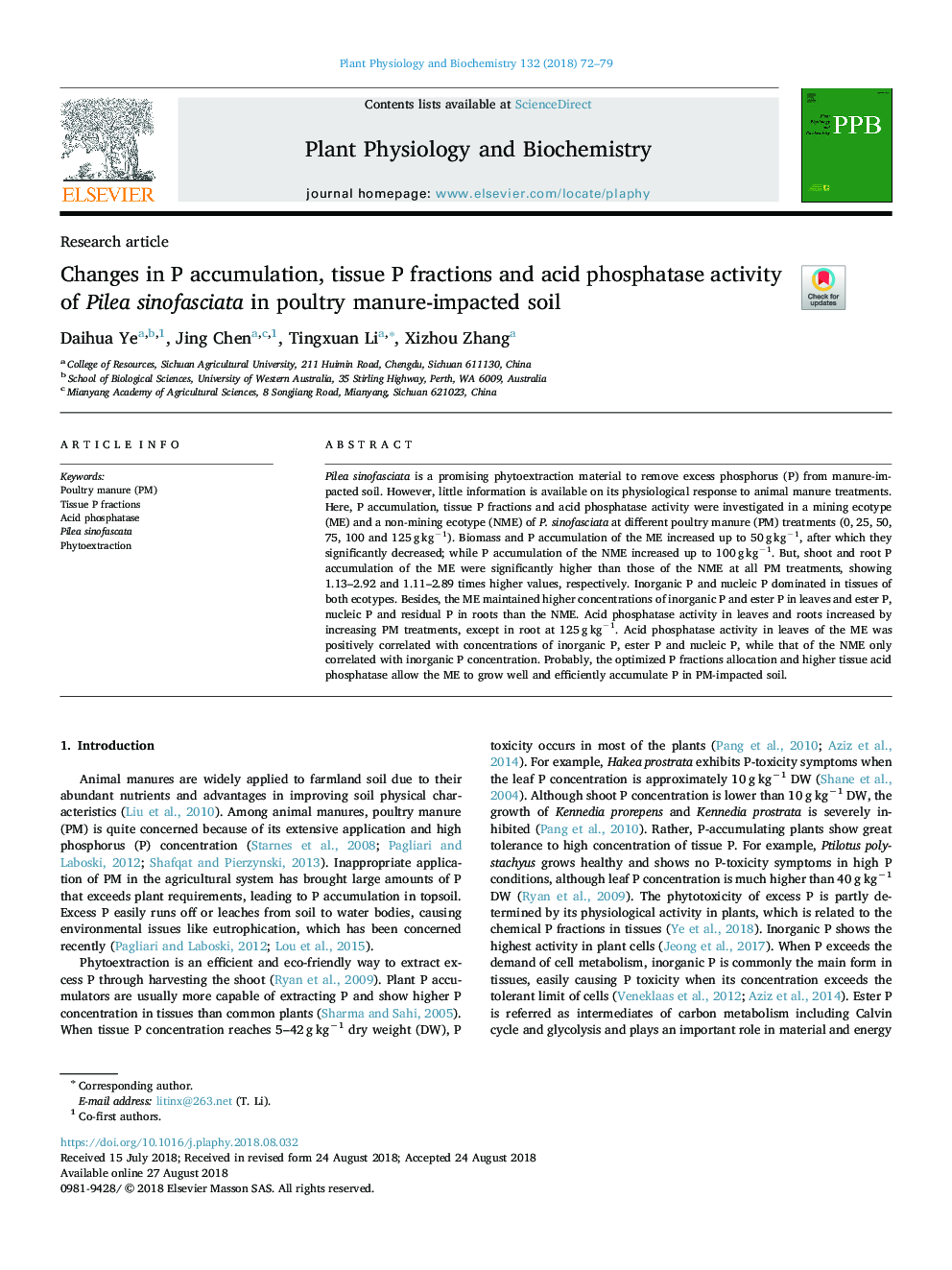| Article ID | Journal | Published Year | Pages | File Type |
|---|---|---|---|---|
| 8956052 | Plant Physiology and Biochemistry | 2018 | 8 Pages |
Abstract
Pilea sinofasciata is a promising phytoextraction material to remove excess phosphorus (P) from manure-impacted soil. However, little information is available on its physiological response to animal manure treatments. Here, P accumulation, tissue P fractions and acid phosphatase activity were investigated in a mining ecotype (ME) and a non-mining ecotype (NME) of P. sinofasciata at different poultry manure (PM) treatments (0, 25, 50, 75, 100 and 125â¯gâ¯kgâ1). Biomass and P accumulation of the ME increased up to 50â¯gâ¯kgâ1, after which they significantly decreased; while P accumulation of the NME increased up to 100â¯gâ¯kgâ1. But, shoot and root P accumulation of the ME were significantly higher than those of the NME at all PM treatments, showing 1.13-2.92 and 1.11-2.89 times higher values, respectively. Inorganic P and nucleic P dominated in tissues of both ecotypes. Besides, the ME maintained higher concentrations of inorganic P and ester P in leaves and ester P, nucleic P and residual P in roots than the NME. Acid phosphatase activity in leaves and roots increased by increasing PM treatments, except in root at 125â¯gâ¯kgâ1. Acid phosphatase activity in leaves of the ME was positively correlated with concentrations of inorganic P, ester P and nucleic P, while that of the NME only correlated with inorganic P concentration. Probably, the optimized P fractions allocation and higher tissue acid phosphatase allow the ME to grow well and efficiently accumulate P in PM-impacted soil.
Keywords
Related Topics
Life Sciences
Agricultural and Biological Sciences
Plant Science
Authors
Daihua Ye, Jing Chen, Tingxuan Li, Xizhou Zhang,
